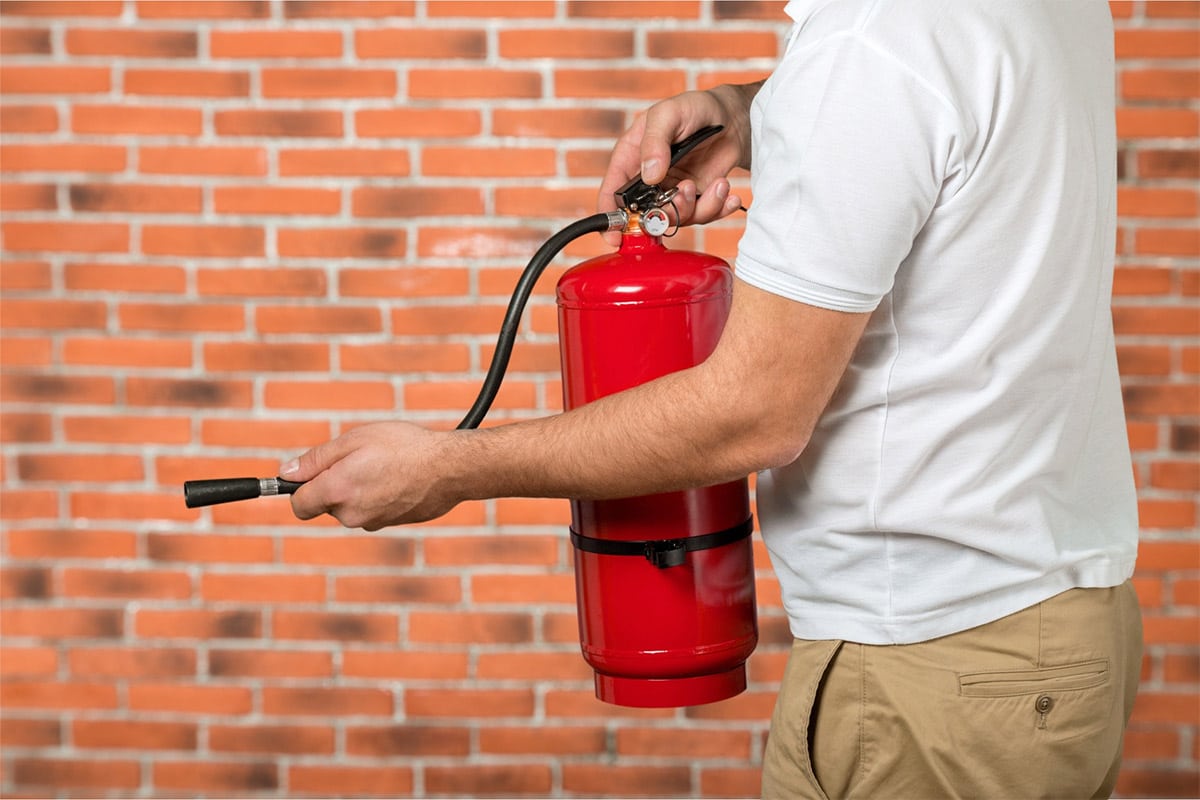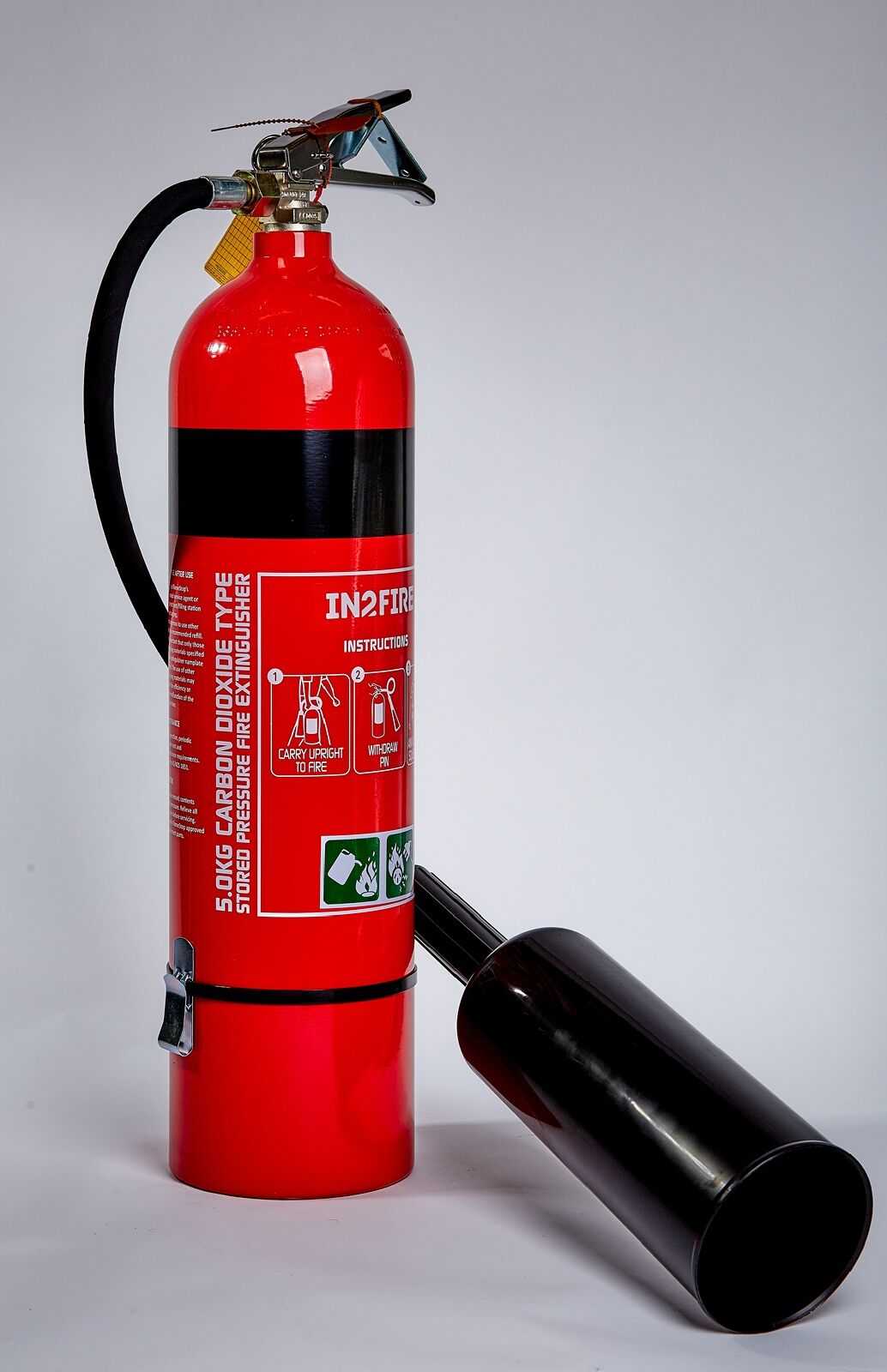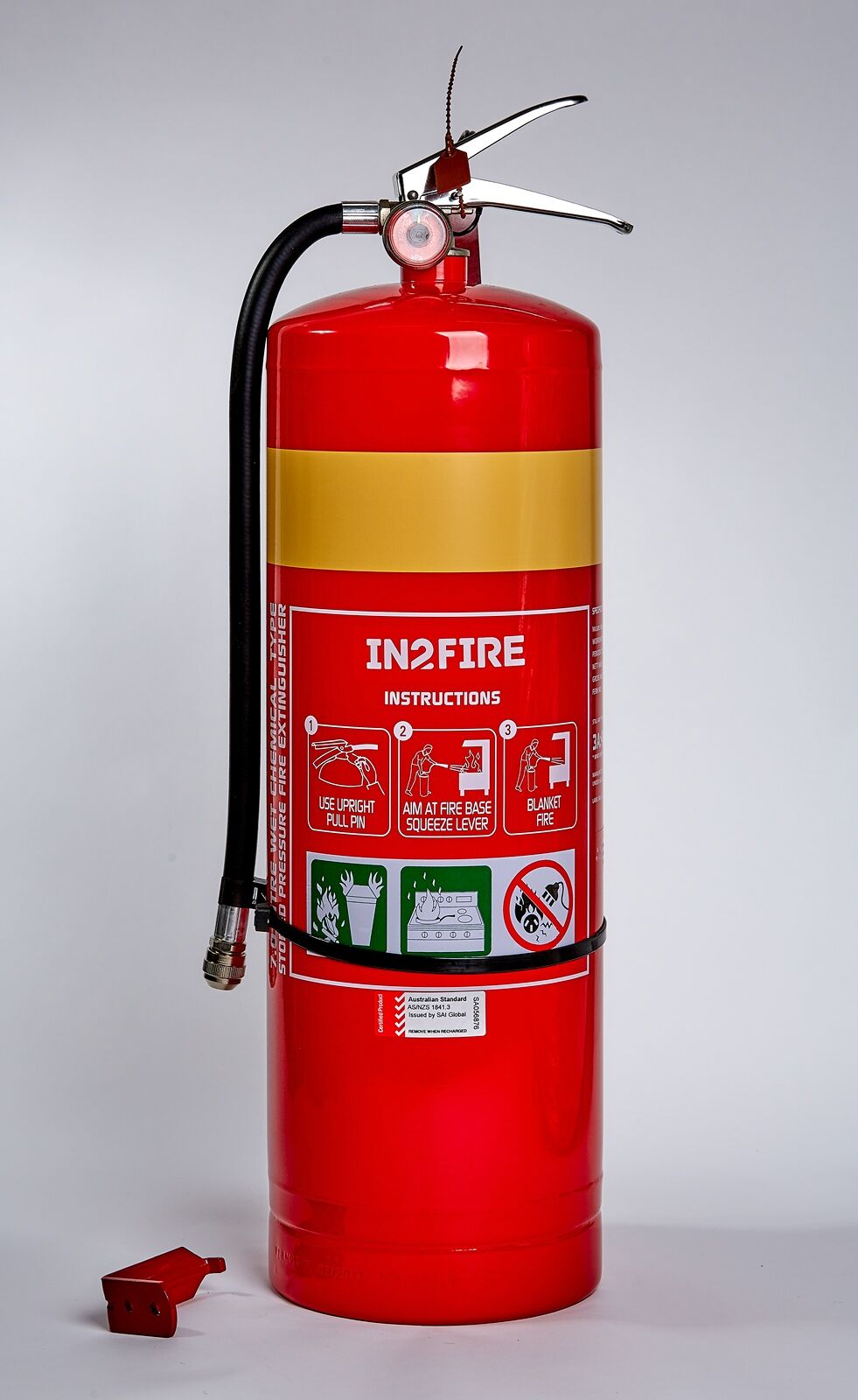An essential piece of fire equipment for your commercial premises, public building, office space, strata title building and work vehicle; fire extinguishers are one of the most commonly used first line of defence items in a fire.
However, as you may be aware, there are several types of fire extinguishers, each of which relate to different types of fire. Therefore, it’s important to understand what the fire risk is at your building premises, what type of fire extinguisher you would need to fight fire and how you can mitigate risk with expertly installed and maintained fire equipment. For further information, you can download our In2 Fire Extinguisher Guide.
It’s law in Australia that fire extinguishers are inspected, tested and serviced every 6 months; this is known as the Australian Standard AS 1851 Maintenance of Fire Protection Systems and Equipment. When our technicians come to your premises to check your fire extinguishers, we will look to see that it is the right size and type for the location, check the signage is correct and that the bracket holding the fire extinguisher on the wall is secure.
We then take the fire extinguisher off the wall to check that the contents are still liquid, check the base date and look for any signs of damage. Lastly, if all is OK, we’ll return the fire extinguisher to the wall and stamp the metal tag.
In addition to 6 monthly servicing, fire extinguishers require either pressure testing or replacing every 5 years, or sooner if a unit is damaged or discharged.

o help our fire services technicians understand your fire safety needs, we will identify your risk of fire from these classes:
- Class A: Ordinary combustibles such as paper or wood
- Class B: Flammable liquids such as petrol or oil
- Class C: Flammable gases such as methane or propane
- Class D: Combustable metals such as aluminium or titanium
- Class E: Electrical equipment such as overloaded electrical cables
- Class F: Cooking oils and fats
As the first line of defence against these classes of fire, you should have access to one or more of the following types of fire extinguisher. Each of these works by taking away one of the elements of the fire triangle, namely heat, oxygen and fuel.
Dry Chemical Fire Extinguishers
Coloured red with a white band, dry chemical fire extinguishers can be ABE or BE extinguishers, both of which have different capabilities and apply to a different fire class. Look carefully to determine if your extinguisher is ABE or BE.
These portable fire extinguishers work by stopping the chemical reaction that occurs during a fire. Users should be careful of discharging this fire extinguisher in confined spaces as it can cause breathing problems or eye irritation.

Water Fire Extinguishers
Water fire extinguishers are coloured red and work by removing heat from the fire. Only suitable for Class A fires. Users should be aware that the use of a water fire extinguisher on flammable liquid, electrical equipment or cooking oils or fats can be extremely dangerous.
Co2 Fire Extinguishers
Carbon dioxide fire extinguishers are coloured red with a black band and are used for Class E and B fires. Co2 fire extinguishers leave no residue after being discharged, making them useful for electrical fires as other nearby equipment will not be affected. Co2 fire extinguishers have no post fire security, meaning a fire could reignite even after discharge.
To keep staff and visitors to your commercial premises safe, fire extinguishers should be serviced every 6 months and pressure tested or replaced every 5 years. If your portable fire equipment hasn’t been serviced or tested for an extended period, give our friendly team a call so we can help you remain compliant and out of danger!

Wet Chemical Fire Extinguishers
Coloured red with a yellow band, wet chemical fire extinguishers are used for Class A and F fires, wet chemical fire extinguishers works by stopping oxygen supply to the fire, suppressing burning oil and covering surfaces with a soap substance to prevent re-ignition. They are largely installed in commercial kitchens and restaurants. This extinguisher should not be used on Class E electrical fires.

If you’d like to know more about fire extinguishers, please give us a call on 1800 177 915 to arrange a free quote or to discuss your portable fire equipment or other fire equipment service needs with one of our expert team.
Alternatively please send us an enquiry below:
